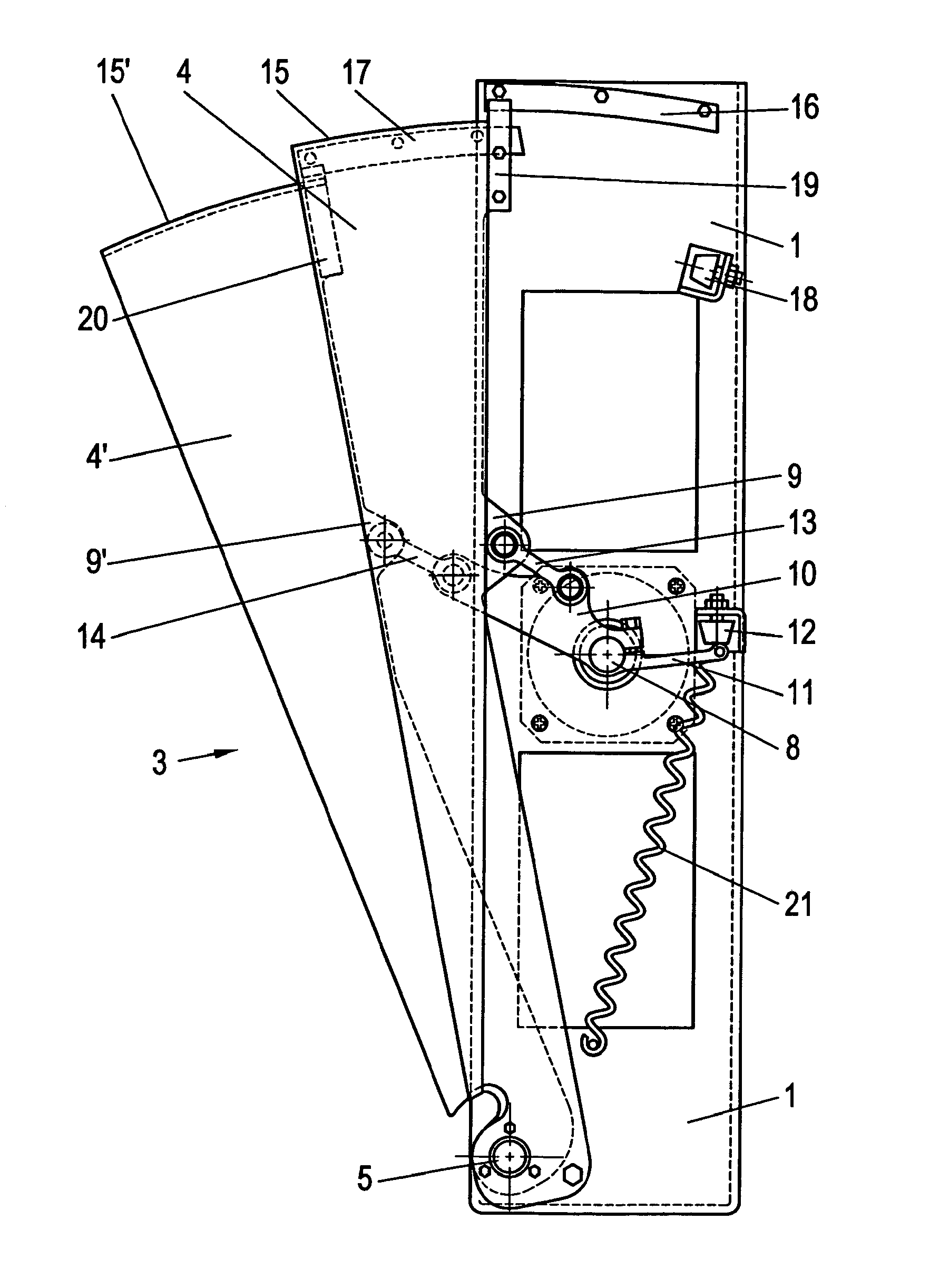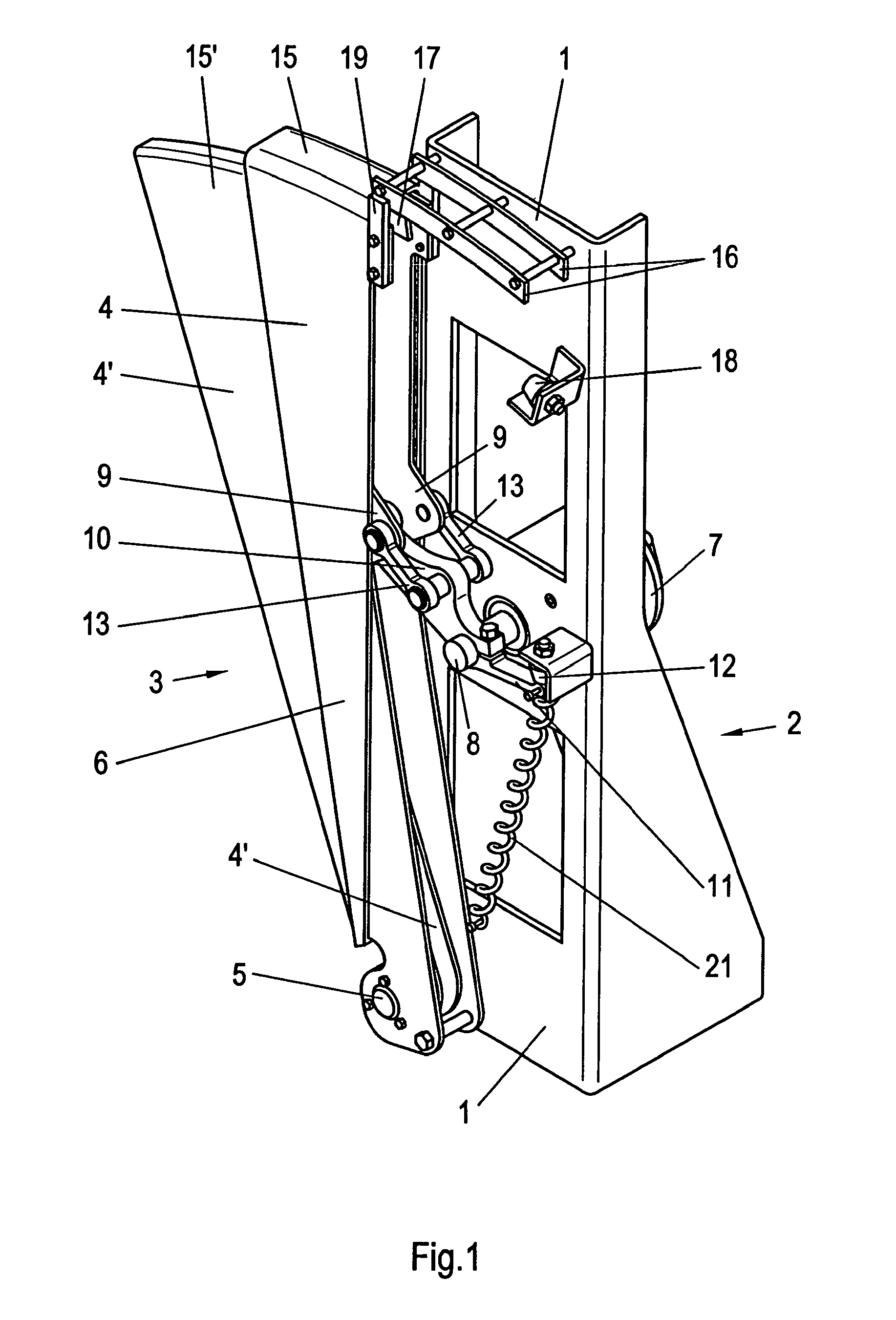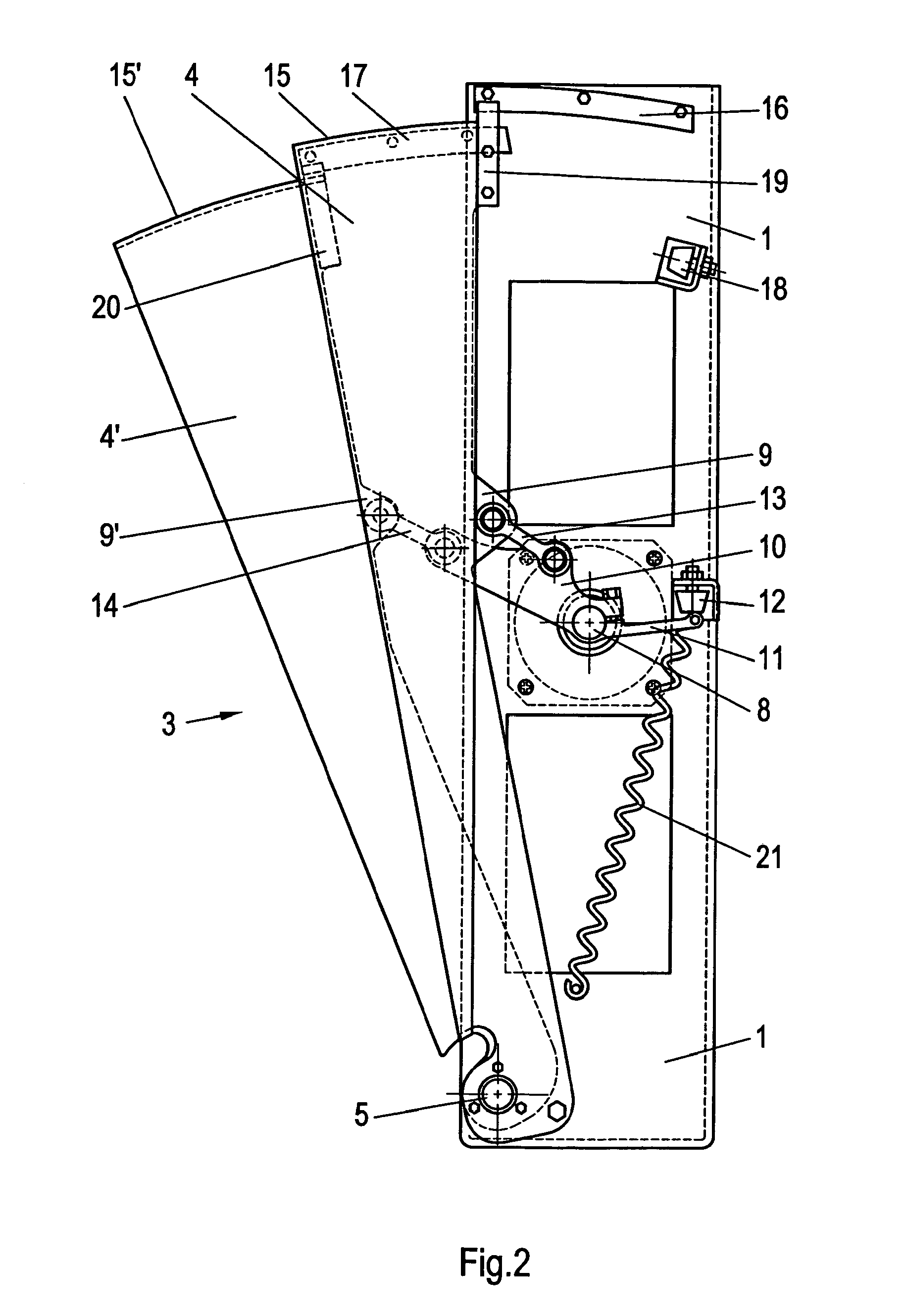Blocking element, particularly for a gate used as a checkpoint
a gate and element technology, applied in the field of blocking elements, can solve the problems of large space occupation, large space occupation, and large space occupation of type of blocking units, and achieve the effects of avoiding injury risk, running smoothly, and subject to little wear
- Summary
- Abstract
- Description
- Claims
- Application Information
AI Technical Summary
Benefits of technology
Problems solved by technology
Method used
Image
Examples
Embodiment Construction
.
The blocking element 3 is mounted on the support wall 1 of an elongate, vertical support 2 which has a cross-section which is bent in the form of a U and is installed in a housing (not illustrated) of a pedestrian gate and whose height corresponds virtually to that of this housing. Said blocking element comprises two blocking vanes 4, 4′ in the form of circle sectors which can slide one over the other or one into the other in a fan-like or telescopic manner in order to open the passage (see FIG. 3) and are moved apart in a reverse manner in order to block the passage (FIGS. 1 and 2). On their tapering sector inner side, the blocking vanes 4, 4′ are mounted close to the floor of the housing on the support wall 1 such that they can pivot about a common pivot axis 5. The two blocking vanes 4, 4′ are of sandwich construction. A very lightweight, but nevertheless stable, foam insert, for example comprising metal foam or foam made of another suitable material, or a honeycomb structure ma...
PUM
 Login to View More
Login to View More Abstract
Description
Claims
Application Information
 Login to View More
Login to View More - R&D
- Intellectual Property
- Life Sciences
- Materials
- Tech Scout
- Unparalleled Data Quality
- Higher Quality Content
- 60% Fewer Hallucinations
Browse by: Latest US Patents, China's latest patents, Technical Efficacy Thesaurus, Application Domain, Technology Topic, Popular Technical Reports.
© 2025 PatSnap. All rights reserved.Legal|Privacy policy|Modern Slavery Act Transparency Statement|Sitemap|About US| Contact US: help@patsnap.com



